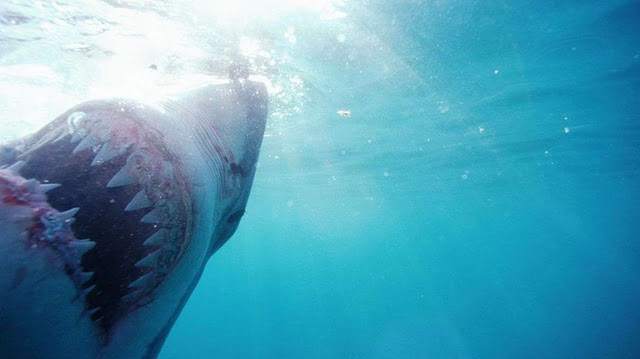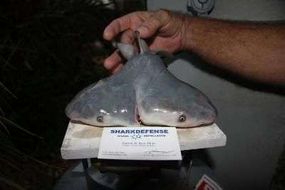Quck answer
Recently, a two-headed shark was discovered by fishermen off the coast of India. While this may seem like cause for alarm, it is actually a rare occurrence that can happen in any species with a vertebrae. It is likely due to a genetic mutation or environmental factors. While it is not a sign of impending doom, it does highlight the need for continued research and conservation efforts to protect our oceans and the creatures that inhabit them.
Wild Animals

A recent discovery of a two-headed shark embryo has raised concerns about the impact of genetic mutations on wild sharks. The discovery was made in a lab where catshark eggs were being grown for cardiovascular human health research. However, this is not the first time that scientists have come across a two-headed shark. Similar discoveries have been made in the past in various parts of the world. While the reasons behind these mutations are not fully understood, it is believed that genetic defects could be caused by pollution, inbreeding, infections and diseases. It is also thought that these mutations may not be as uncommon as previously thought, but that the resulting sharks may not live long enough to be seen in the wild. Despite concerns about the impact of genetic mutations on wild sharks, it is unlikely that we will see giant two-headed sharks attacking humans anytime soon.

Now That’s Interesting
In the past, Soviet scientist Vladimir Demikhov attempted to create two-headed dogs through organ transplants and genetic manipulation.
FAQ
1. What is a two-headed shark?
A two-headed shark is a rare mutation that occurs when two embryos fuse together. The result is a shark with two distinct heads, each with its own brain and digestive system.
2. How often do two-headed sharks occur?
Two-headed sharks are incredibly rare. Scientists have only documented a handful of cases throughout history.
3. What is the significance of the new two-headed shark discovery?
The new discovery of a two-headed shark is significant because it helps scientists better understand the genetic mutations that can occur in sharks and other animals. It also highlights the importance of studying the effects of environmental factors on animal development.
4. Should we be concerned about the discovery of a two-headed shark?
No, the discovery of a two-headed shark does not indicate any immediate danger to humans or the environment. It is simply a rare genetic anomaly that has been documented by scientists.
5. Could two-headed sharks become more common in the future?
While it is possible that environmental factors could increase the occurrence of genetic mutations like two-headed sharks, there is currently no evidence to suggest that this is happening on a large scale.
6. How do two-headed sharks survive?
Two-headed sharks have a difficult time surviving in the wild because they are often unable to hunt or swim effectively. Many die shortly after birth.
7. Are there any benefits to studying two-headed sharks?
Studying two-headed sharks can help scientists better understand how genetic mutations occur and how they can impact an animal’s development and survival. This information can be used to develop new treatments for genetic disorders in humans.
8. What other animals have been found with two heads?
In addition to sharks, two-headed animals have been documented in snakes, turtles, and even cows. However, these mutations are incredibly rare in all species.





Leave a Reply